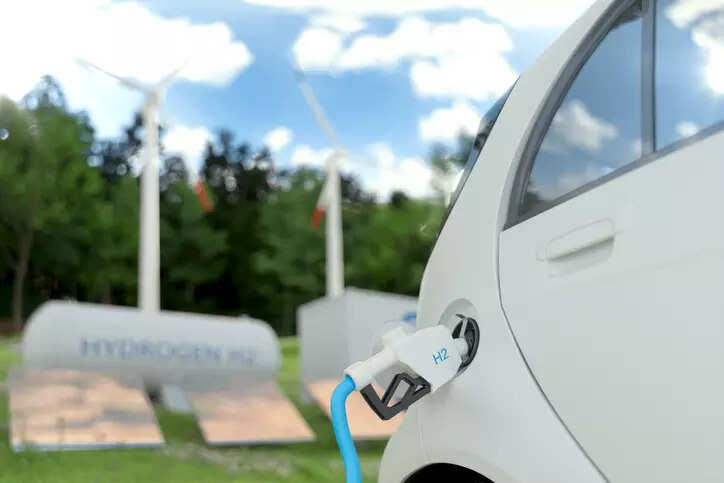Renewable Energy
Find latest News, Industry Updates, Markets, Finance, Policies and Regulations, Tenders
Renewable Energy News in India
Green Hydrogen Policy: A good directional step, with promise of more to come

New Delhi: The much-awaited Green Hydrogen Policy of Government of India has been unveiled. Over the past year Green Hydrogen has captured the imagination of the world as a means of rapid decarbonisation. India has been looking up to it not only as a green fuel and industrial feedstock, but also as a means of import bill reduction, domestic manufacturing enhancement and energy security.Even if no silver bullet, that Green Hydrogen (or its variants) will play a very important role in decarbonisation at scale is now globally acknowledged. However, adoption at scale and bringing down the costs to affordable levels will be critical. Presently the commonly used reference price of Green Hydrogen is about USD 4.5- 5 per kg. For scale to be achieved it has to come down to hydrogen produced from traditional methods which would be typically $ 1-2 per kg. The cost chain of Green Hydrogen has three essential elements – cost of renewable energy production, cost of transportation, and costs associated with electrolysis which is the process of breaking down water molecules into hydrogen and oxygen. Transportation of hydrogen in the form of molecules over long distances is not cost economical at this time. Instead, the typical approach would be to transmit the electrical energy over the power transmission system and produce at or close to the consumption location. The focus of India’s present policy is largely around the electricity transmission ecosystem. It does not materially attempt to address costs of renewable energy production or the costs of electrolysis other than through banking that can help to bring down hydrogen production cost by better electrolyzer utilization.Core to the policy is the provision of free and easy open access to the inter-state transmission system (ISTS) which is the backbone power transmission network. Waiver of transmission charges for 25 years for capacity installed by June 2025 for Green Hydrogen/Green Ammonia will bring down delivered costs significantly. The aspect to watch out is open ended nature in terms of capacity that would be covered by the waiver. In a sense this could be a double-edged sword. Since there is no specific subsidy proposed in the policy, the costs will be socialized among other users. There is already a lot of noise on high transmission charges among the utilities. A very successful Green Hydrogen policy could heighten those concerns.The policy also focuses largely on the Inter State Transmission System (ISTS) since that is in the direct remit of Government of India’s policy. In India’s federal structure there are constitutional limitations on the reach of the policies on matters controlled by State level actors. However, in practice elements of the chain may come under the purview of State authorities. How they react to the policies needs to be seen since the Electricity Act, 2003 only requires State regulators to be guided by the National Electricity Policy and Tariff Policy. A key factor in viability of open access is the incidence of cross-subsidy charges. The policy talks of own- or third-party development in the same breath, but the law sees it differently. The specific formulation that would avoid the incidence of cross-subsidy charges when the renewable project is developed by a third party needs to be understood. Also, renewable energy supply by Discom for Green Hydrogen has not been obviated but there is a caveat of costs plus a “small margin” being permitted. While Discom tariffs are the preserve of the State Electricity Regulatory Commissions, this would in effect entail creation of a new tariff category. That in itself may not be bad. However, the issue of unravelling the high tariff distortions for industry in general would remain. There are also references to a 30-day energy banking period for Green Hydrogen. The mechanics of that need to be understood since the ISTS grid is only a flow mechanism and banking is not a natural phenomenon for ISTS connected facilities. For Discom connected facilities the computation formula referencing today ahead of power market prices for the month is interesting but needs to be understood mathematically for implications. At the minimum it will be dynamic in nature depending on exchange prices from month to month. So will introduce new volatility and dynamics.The policy points to stiffening of Renewable Purchase Obligations (RPO) and stronger penalties for delinquents. It also holds out some carrots for the Discoms by adjusting any excess of consumers’ use of renewables for Green Hydrogen production beyond their RPO obligation by transferring those excess “credits” to Discoms. In the short term that can indeed be an incentive. In the medium to long term though RPO itself may become irrelevant with the rapid propagation of renewables.The policy does not yet cover any mandate for user industries, especially fertilizer and refineries, which was widely anticipated. There are hints that would come subsequently. The policy also does not provide any specific fiscal incentive for electrolyser manufacturing. In effect what the policy does is without touching the demand and supply ends directly, it adjusts set pieces on transmission in between to reduce costs of delivery of power and smoothen processes involved. That in itself can have major impacts and at the minimum send strong directional signals for Green Hydrogen, though further measures through the value chain will perhaps be necessary for achieving the promise and potential.
News Date: 18-Feb-2022
News Source: https://energy.economictimes.indiatimes.com/news/renewable/green-hydrogen-policy-a-good-directional-step-with-promise-of-more-to-come/89661660
About Portal
'All About Renewables' aims to bring about a change in the way we 'look and search' for data on renewables today, by providing access to the latest developments in the renewable energy sector (specifically renewable electricity), along with cross-linkages to the conventional energy sector, all on one single platform... Read More
About
Useful Links
Contact
Plot No.44, Hindustan Estates,
Kalyani Nagar, Pune 411 006, India
+91 20 26613855
+91 20 26613832

